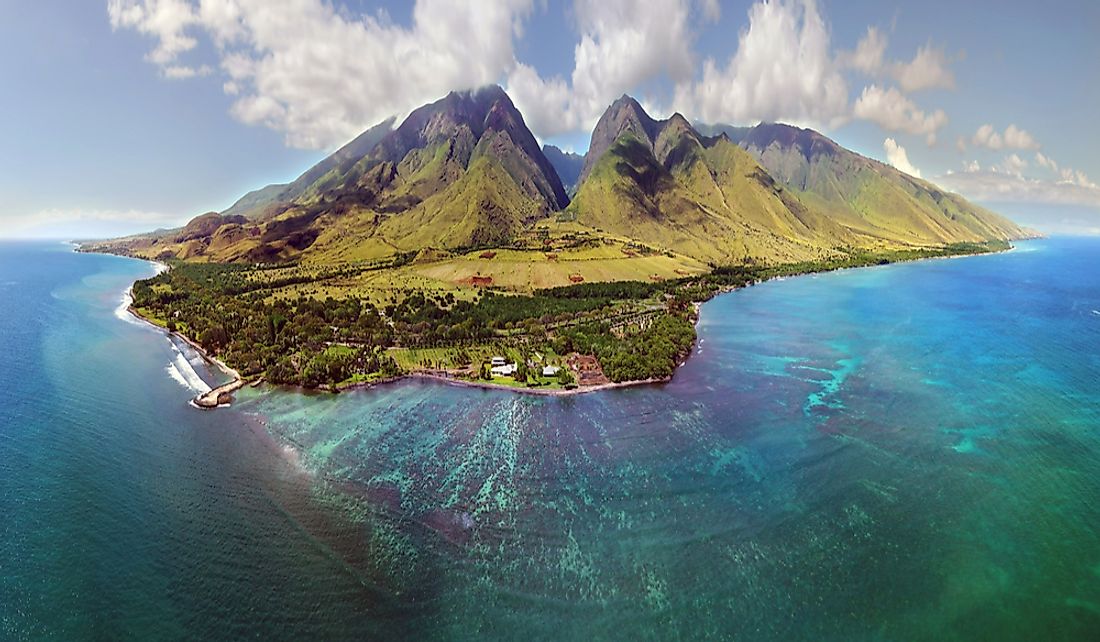Is Hawaii Bordered By Any US State?

Hawaii, famously nicknamed the Aloha State, is a US state located in the Central Pacific Ocean. The state is made up of a volcanic archipelago, which is composed of eight islands: the Island of Hawaii (often referred to as the "Big Island"), Oahu, Lauai, Malokai, Kahoolawe, Niihau, Kauai, and Maui. All islands are inhabited except Kahoolawe. Hawaii is the only US state entirely composed of islands and is the 50th and most recent state to join the union, becoming a US state on August 21, 1959. As an island archipelago in the Pacific Ocean, Hawaii has no land borders and therefore does not border any US state.
Geography of Hawaii
The state capital of Hawaii is Honolulu, which is located on Oahu. The state has a total area of 28,311 square kilometers and a population of about 1.4 million people, which ranks as the 8th smallest by area and the 13th most densely populated in the United States. Geographically, Hawaii features diverse natural scenery, a warm tropical climate, and the southern part of the state contains active volcanoes. The official languages spoken are Hawaiian and English, and the state is a favorite holiday destination for many tourists due to its many iconic beaches of gold, red, black, and green sand. It is also the only US state in which coffee can be grown for commercial purposes.
Borders of Hawaii
Hawaii is located 2,000 miles southwest of the contiguous United States. The closest US state to Hawaii is Alaska. Although located far from the western coast of the contiguous United States, Hawaii is considered one of the West Pacific States, along with Alaska, Oregon, California, and Washington, all of which have coastline along the Pacific Ocean. Hawaii’s culture is a blend of cultures from indigenous Hawaiians, North Americans, and East Asians.
Formation of Hawaii
Hawaii sits above a volcanic hotspot, which experiences hot molten rock pushed from the sea plate to the Earth's surface, resulting in volcanic activity. In fact, Hawaii was formed through this volcanic process millions of years ago. Multiple volcanic eruptions led to the formation of a series of islands that now form Hawaii's archipelago of islands. Geologists believe that the Hawaiian islands will continue to be transformed since the Pacific plate is still in motion, moving a few inches each year. The tallest volcanic mountain in Hawaii is Mauna Kea, which has an elevation of 13,796 feet above sea level.
Brief Political History of Hawaii
The first people to occupy Hawaii between 124 and 1120 were Polynesian. Prior to the arrival of Europeans in 1778, Hawaii was a monarchy led by King Kamehameha III. A constitution was later passed and adopted in 1950, which outlined three branches of government: executive, judicial, and legislative. The Constitution of Hawaii was amended in 1959 and 1968. Hawaii later joined the United States and is currently governed by a governor, as well as a lieutenant governor. These leaders are elected jointly for a term of four years.











